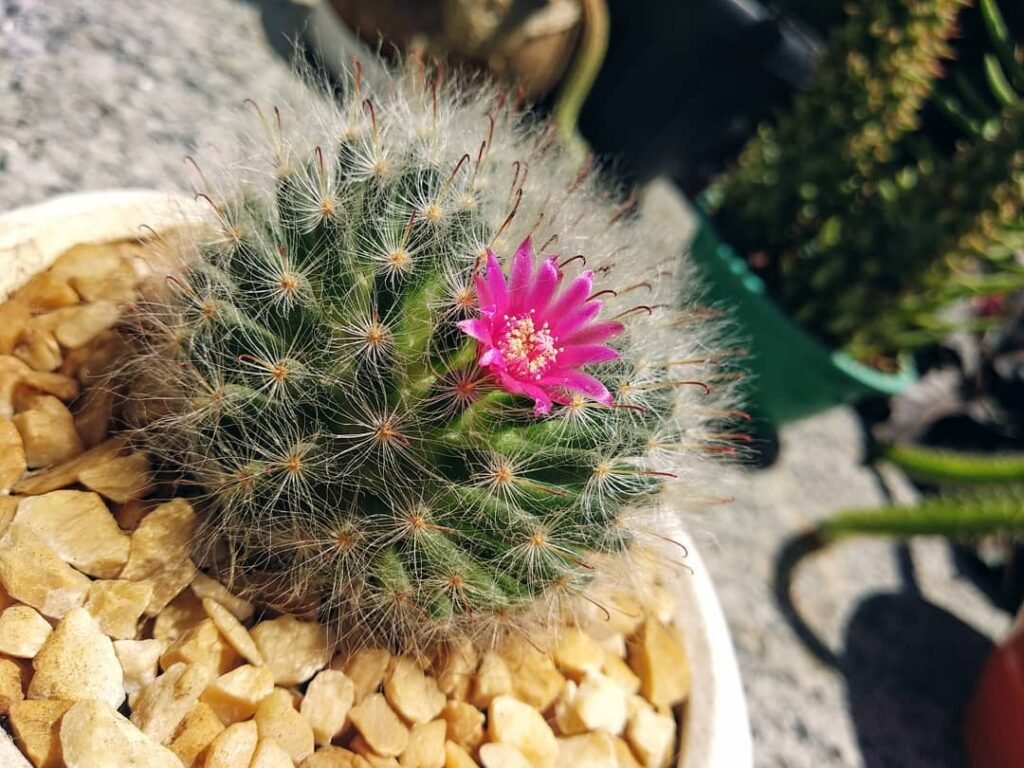Are you looking to add a touch of desert charm to your home or garden? Meet Mammillaria bocasana, also known as the Powder Puff Cactus. This unique succulent plant, native to Mexico and the South-Western US, is not only a low maintenance plant but also a stunning desert beauty.
But how do you care for this powder puff wonder in the UK? Let me guide you through the essential tips and tricks to ensure a thriving display of Mammillaria bocasana, the epitome of a low maintenance succulent.
Appearance of Mammillaria bocasana (Powder Puff Cactus)
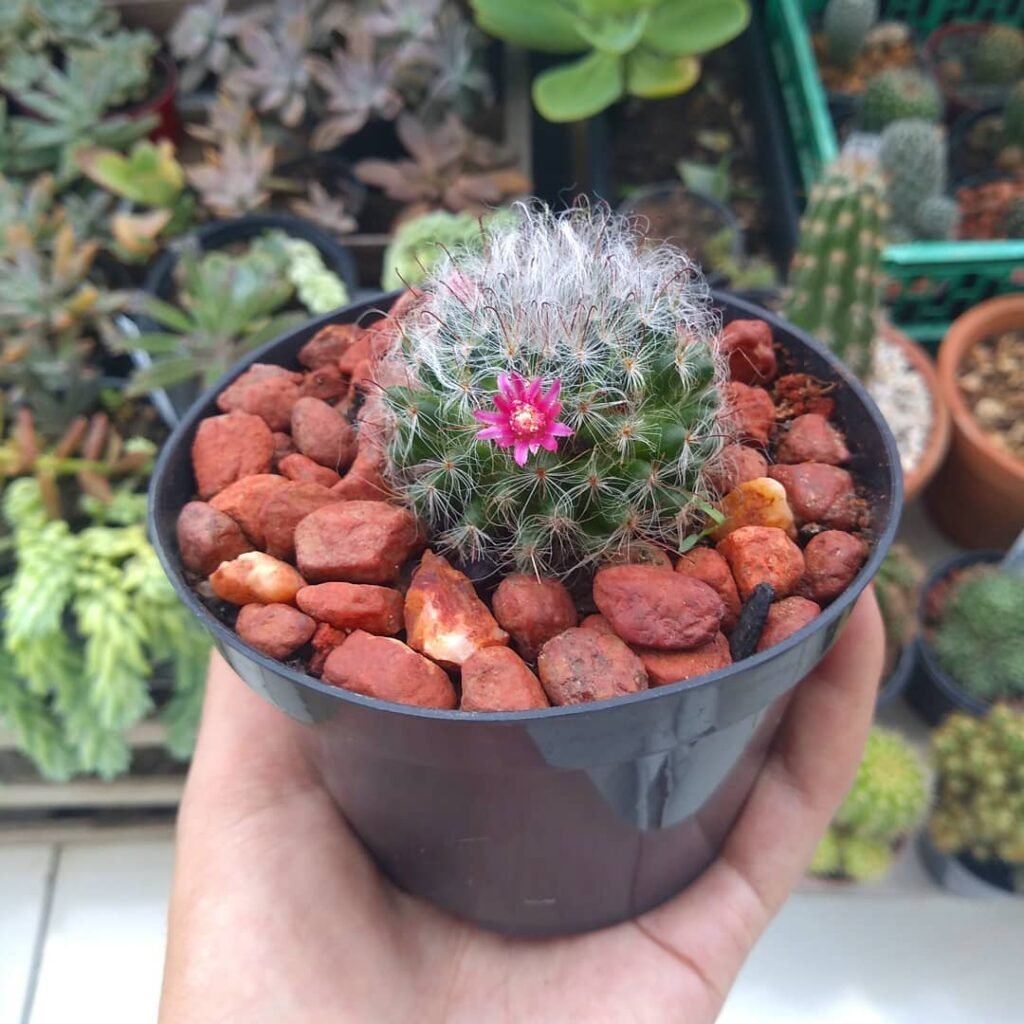

Mammillaria bocasana is a charming succulent plant that showcases a unique and captivating appearance. With its small, round body and bluish-green hue, it adds a touch of beauty to any space.
One of the notable features of Mammillaria bocasana is its short stems that hug the ground, creating a compact and adorable display. The cactus is covered in silky white hairs, giving it a delicate and soft appearance like a powder puff. These hairs also provide protection against intense sunlight and help reduce water loss.
Complementing its silky white hairs, Mammillaria bocasana is adorned with small spines that come in vibrant shades of red or yellow. These spines not only add visual interest but also serve as a defensive mechanism to deter herbivores and protect the plant from potential harm.
Adding to its allure, Mammillaria bocasana blossoms with small, dainty flowers. These flowers can be white or red and cluster around the parent plant, enhancing its overall beauty.
Overall, the appearance of Mammillaria bocasana makes it a wonderful addition to succulent collections, desert-themed gardens, or as a decorative accent in contemporary and minimalist interiors.
 The Powder Puff Cactus is adorned with white hairs, which aren’t just for show. These hairs help shield it from the blazing sun and keep moisture in, showcasing nature’s clever way of helping it thrive in dry conditions.
The Powder Puff Cactus is adorned with white hairs, which aren’t just for show. These hairs help shield it from the blazing sun and keep moisture in, showcasing nature’s clever way of helping it thrive in dry conditions.
Light Requirements for Mammillaria bocasana
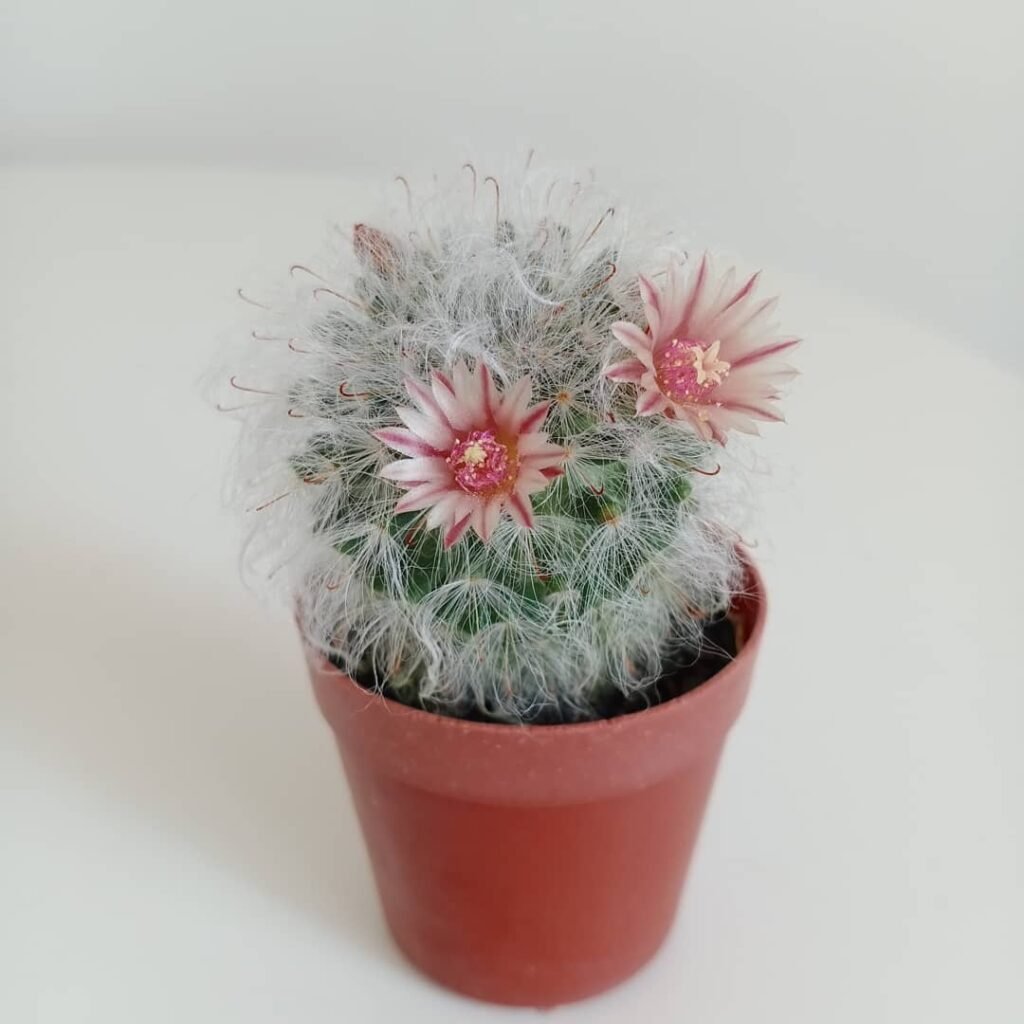
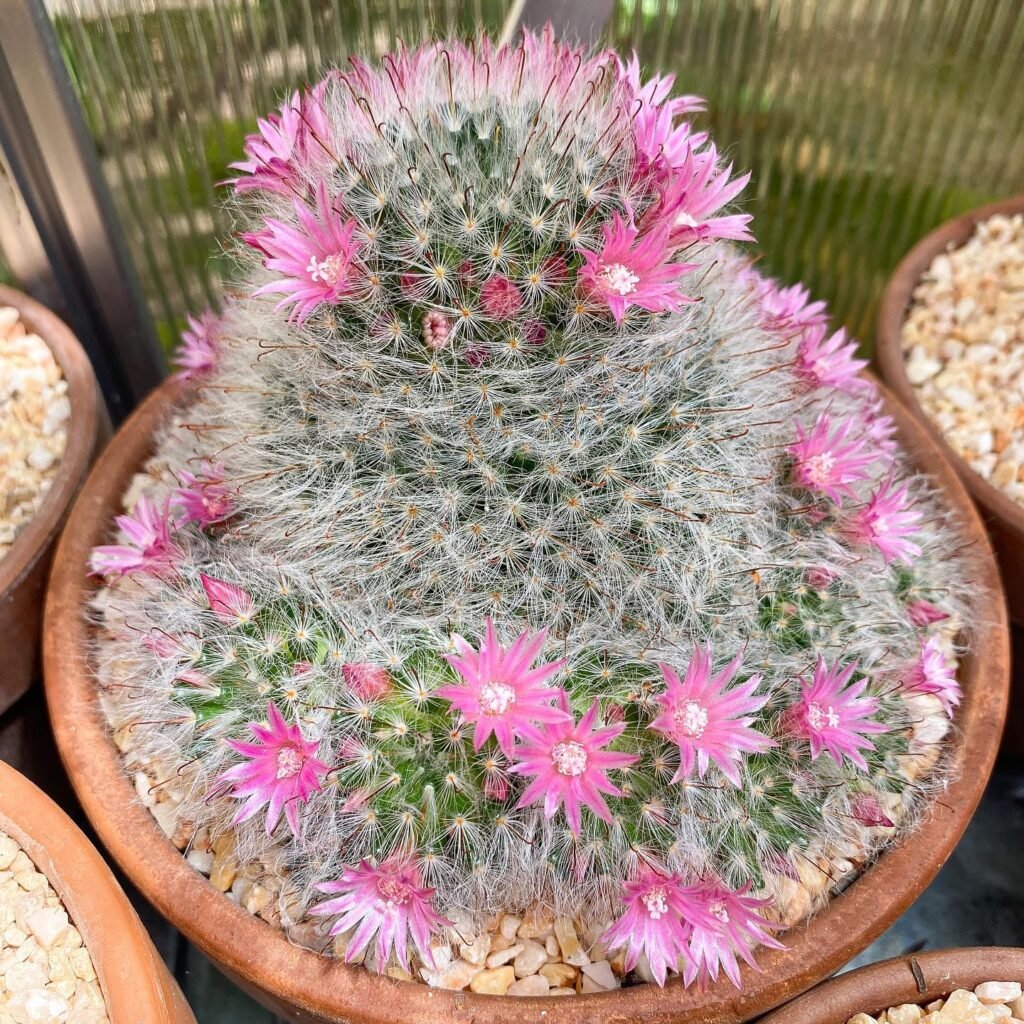
Mammillaria bocasana, or the Powder Puff Cactus, thrives in bright sunlight. To ensure the well-being of this desert plant, it is important to provide it with plenty of light. In fact, Mammillaria bocasana prefers full sun exposure, so it is best to place it in a sunny spot in your home or garden.
If you are growing Mammillaria bocasana indoors, consider placing it near a south-facing window where it can receive ample sunlight. Alternatively, you can use artificial grow lights to provide the cactus with the necessary light it needs to thrive.
Living in the UK, it is crucial to ensure that your Mammillaria bocasana receives at least eight hours of sunlight each day. This will help mimic the desert-like conditions that this cactus thrives in. By providing the right amount of light, you can enjoy a healthy and vibrant display of Mammillaria bocasana in your home or garden.

Watering Tips for Mammillaria bocasana (Powder Puff Cactus)
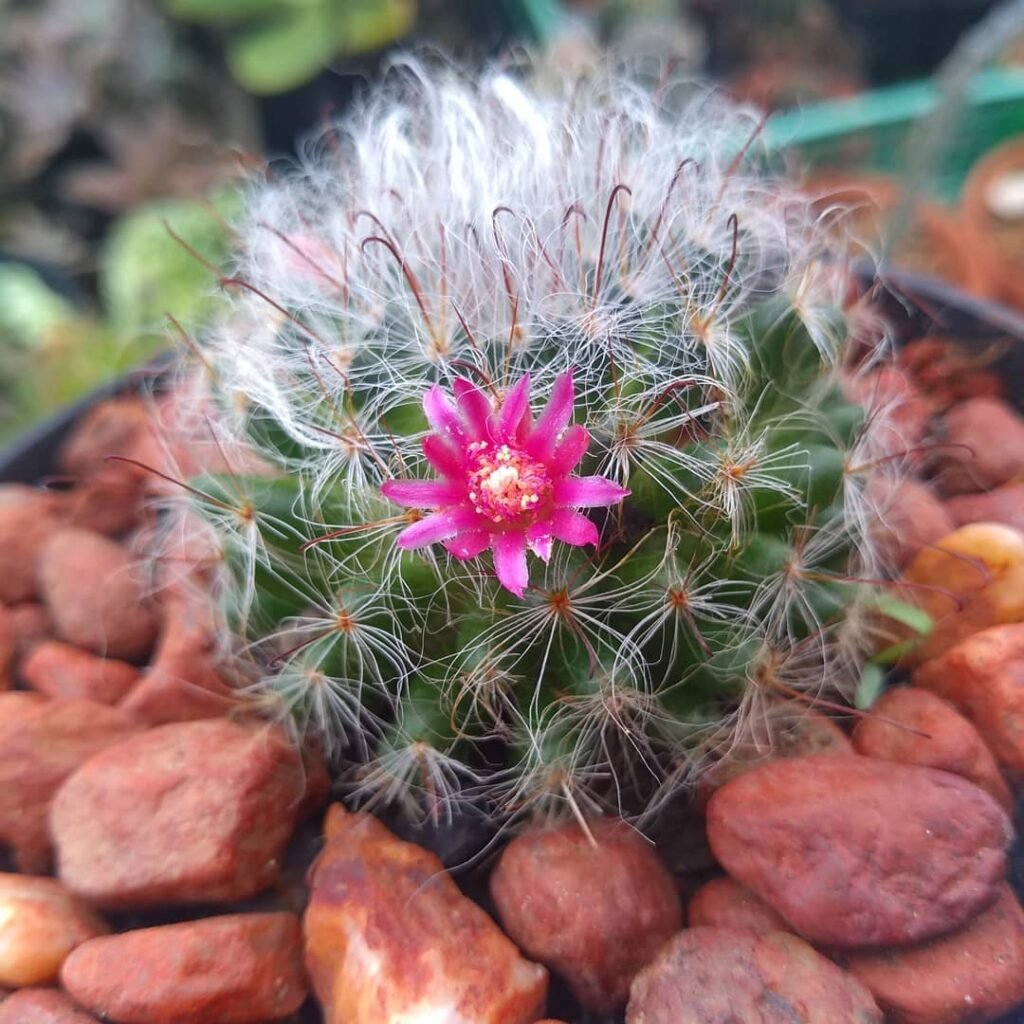
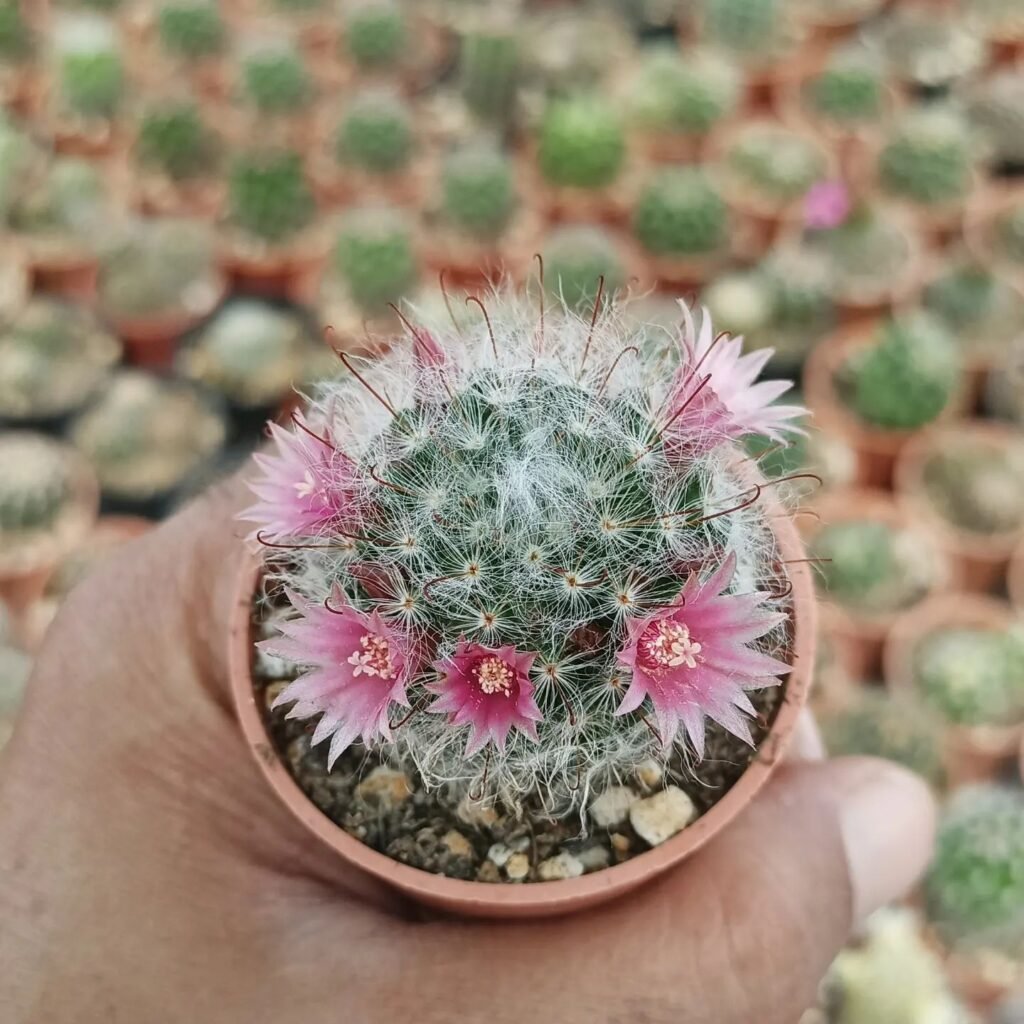
Mammillaria bocasana, also known as the Powder Puff Cactus, is a drought-tolerant plant that requires infrequent watering. Proper watering is essential to ensure the health and longevity of this desert plant. Here are some important watering tips to keep your Mammillaria bocasana thriving:
- During the summer months: Water the cactus sparingly, allowing the soil to dry out between waterings. The frequency of watering will depend on the weather conditions and the moisture level of the soil. Overwatering can lead to root rot and other issues, so it’s crucial to avoid excessive moisture.
- In the winter months: Reduce watering even further, as the cactus enters a dormant period. Only water if the soil becomes completely dry. It’s important to remember that Mammillaria bocasana is adapted to survive in arid conditions, so it can tolerate extended periods without water.

Fertilizing and Soil for Mammillaria bocasana
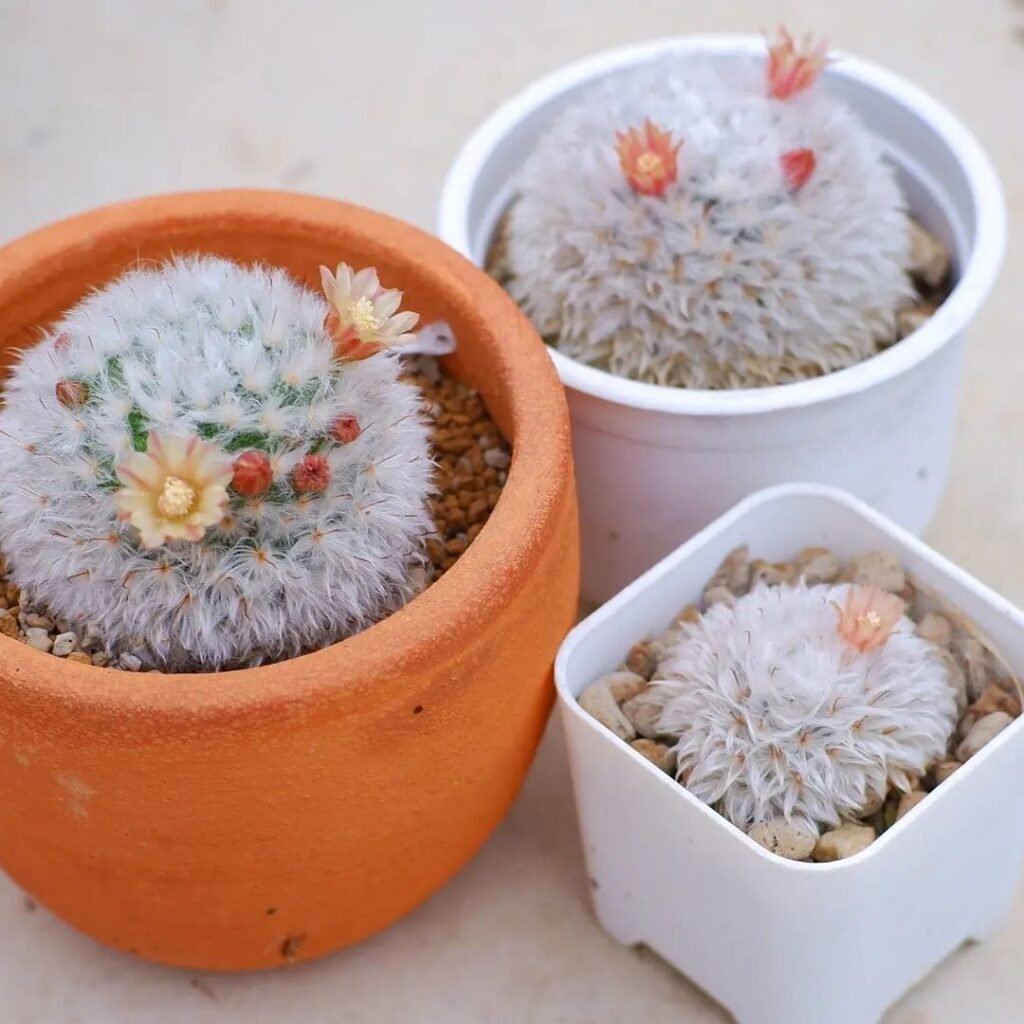
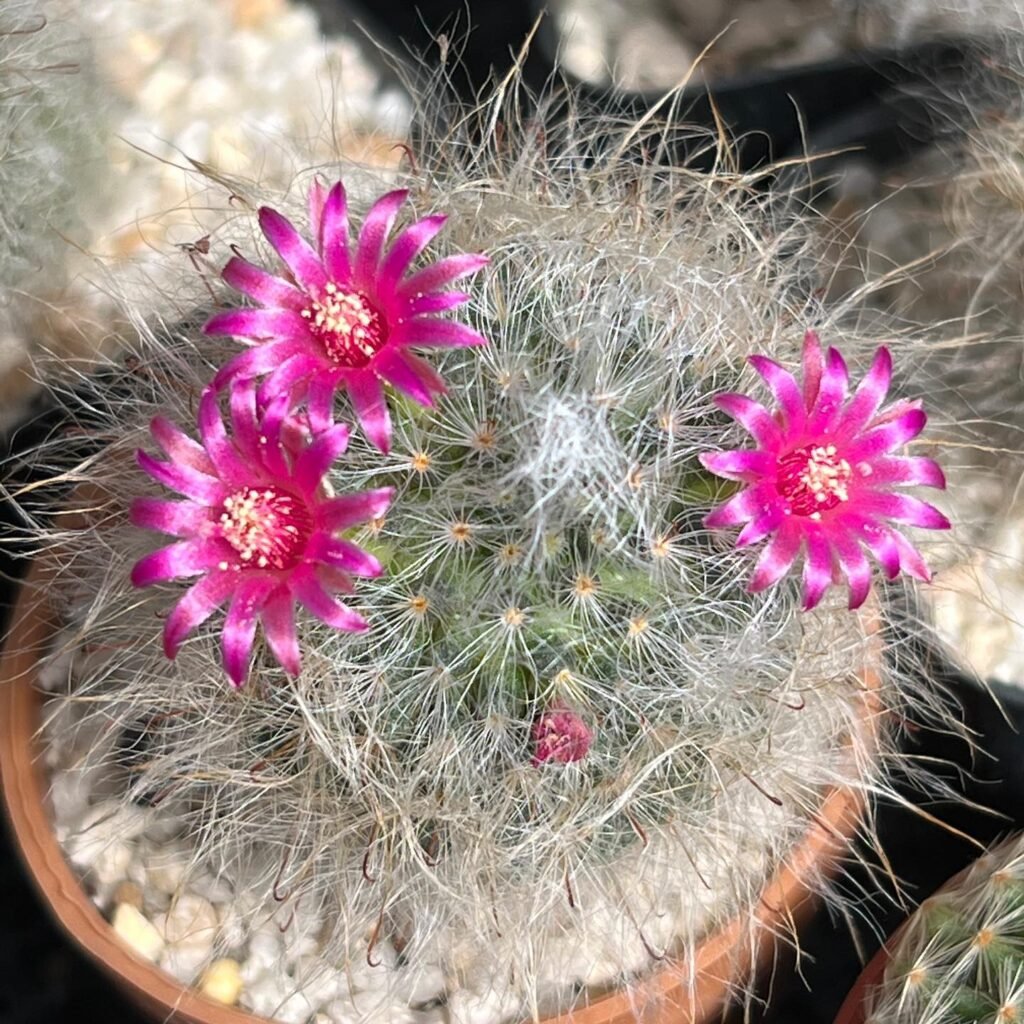
Mammillaria bocasana, like many other succulent plants, does not require frequent fertilization. In fact, it’s best to avoid over-fertilizing, as this can be detrimental to the health of the plant. During the growing season, which typically spans from spring to early autumn, you can fertilize the cactus once a month with a diluted balanced liquid fertilizer. This will provide the necessary nutrients to support healthy growth and vibrant blooms.
When selecting a fertilizer, it’s important to choose one that is specifically formulated for cacti and succulents. These fertilizers usually have an N-P-K ratio (nitrogen, phosphorus, and potassium) that is balanced or slightly higher in phosphorus, which promotes flowering. Follow the instructions on the fertilizer packaging for the recommended dilution rate to avoid overfeeding.
In terms of soil, Mammillaria bocasana prefers a well-draining mix that replicates its natural habitat. A suitable soil mix can be made by combining cactus mix or sandy potting soil with coarse sand or perlite. This helps create a loose and well-drained medium that prevents water from accumulating around the roots, reducing the risk of root rot.
When repotting or planting Mammillaria bocasana, ensure that the pot has adequate drainage holes to allow excess water to escape. The ideal soil should be slightly acidic, with a pH level ranging from 6.0 to 7.0. It is advisable to test the pH of the soil periodically using a pH testing kit to ensure it remains within the recommended range.

Pruning and Maintenance for Powder Puff Cactus
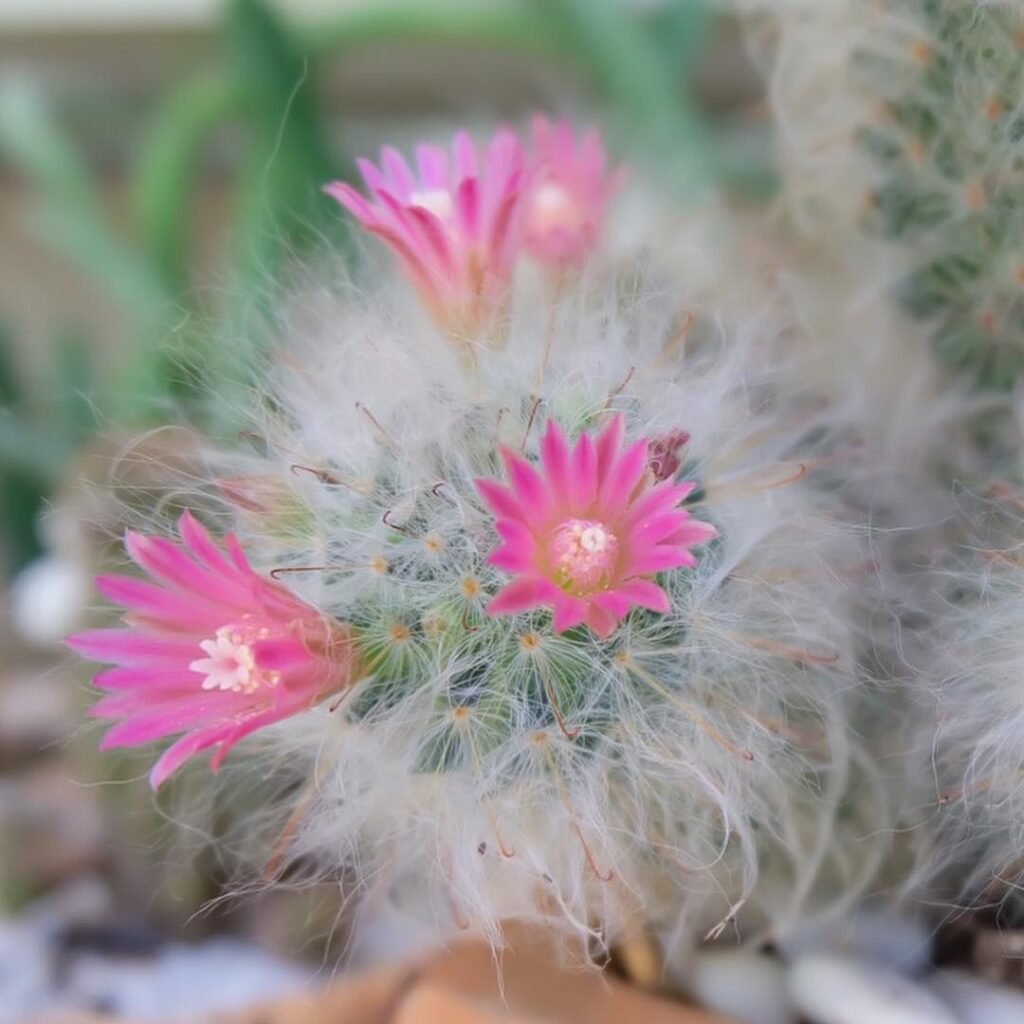
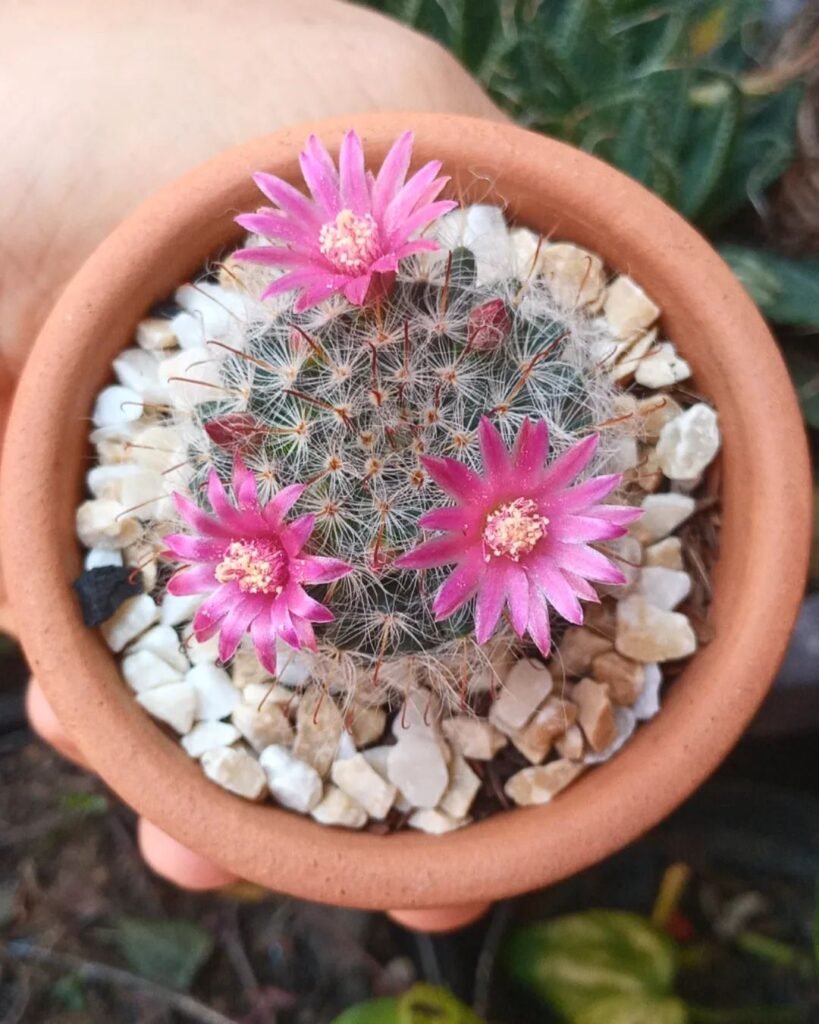
Mammillaria bocasana, also known as the Powder Puff Cactus, is a relatively low maintenance plant that typically does not require extensive pruning. However, regular maintenance is essential to keep the cactus healthy and thriving. Here are some tips for pruning and maintaining Mammillaria bocasana:
1. Pruning
If your Mammillaria bocasana becomes overgrown or damaged, you can use clean, sharp scissors to trim off any dead or unhealthy parts of the plant. Trim close to the base of the cactus, ensuring a clean cut. Removing dead or damaged sections not only improves the plant’s appearance but also promotes its overall health and growth.
2. Regular Maintenance
In addition to pruning, it is important to regularly maintain your Mammillaria bocasana to ensure optimal growth and health. Keep an eye out for common pests such as whiteflies and mites, as they can cause damage to the plant. If you spot any signs of pest infestation, take immediate action to address the issue. Also, ensure that the cactus is kept in suitable conditions, including adequate sunlight and proper watering practices.
3. Sunlight
Mammillaria bocasana thrives in full sun exposure, so it is important to provide the cactus with sufficient sunlight. Place it in a sunny spot in your home or garden, preferably with at least eight hours of sunlight each day. If you are growing the cactus indoors, position it near a south-facing window or use artificial grow lights to simulate natural sunlight.
4. Watering
Maintaining proper watering practices is crucial for the health of Mammillaria bocasana. As a desert plant, it is adapted to dry conditions and is tolerant of drought. Water the cactus sparingly, allowing the soil to dry out between waterings. During the winter months, when the cactus is dormant, reduce watering even further and only water if the soil becomes completely dry.
5. Healthy Environment
Creating a conducive environment for your Mammillaria bocasana is key to its long-term maintenance. Ensure that the cactus is planted in a well-draining soil mix, such as cactus mix or sandy potting soil, to prevent waterlogging and root rot. Additionally, avoid exposing the plant to extreme temperature fluctuations, as this can cause stress and damage.

Propagating Mammillaria bocasana (Powder Puff Cactus)

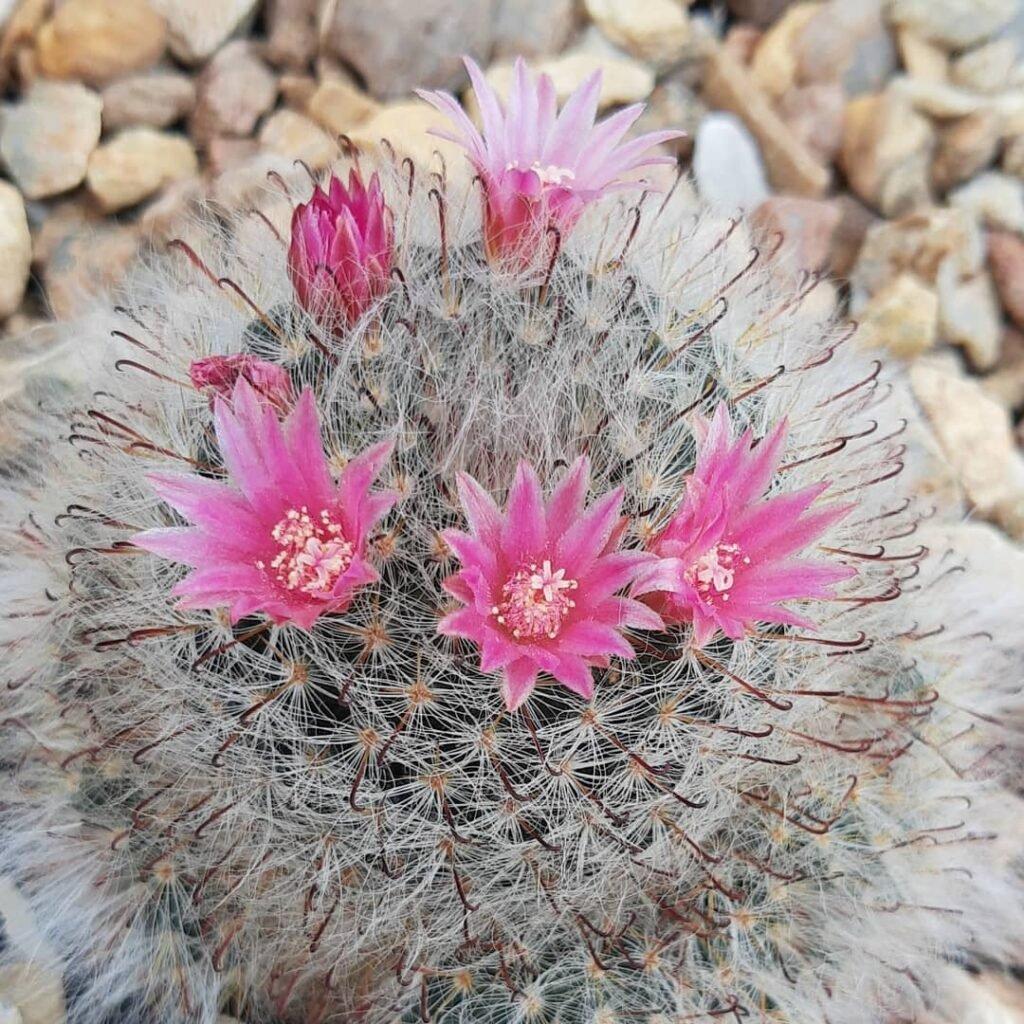
Mammillaria bocasana, also known as the Powder Puff Cactus, can be propagated through offsets or seeds. Offset propagation is the most common and efficient method.
Propagation through Offsets:
To propagate Mammillaria bocasana through offsets:
- Carefully remove the offsets that have developed around the base of the parent plant.
- Allow the offsets to callus for a day to prevent rotting.
- Plant the callused offsets in a well-draining soil mix, such as cactus mix or sandy potting soil.
- Keep the soil slightly moist until the offsets establish roots and begin to grow.
Propagation through Seeds:
Propagation through seeds is also possible, but it requires more time and patience. To propagate Mammillaria bocasana through seeds:
- Harvest mature seeds from the plant’s flowers.
- Prepare a well-draining soil mix in a seed tray or small pots.
- Sow the seeds on the surface of the soil and gently press them in.
- Mist the soil lightly to moisten it without overwatering.
- Place the tray or pots in a warm location with indirect sunlight.
- Keep the soil consistently moist until the seeds germinate.
- Once the seedlings have grown a few sets of true leaves, they can be transplanted into individual pots.
Propagation through offsets is generally the preferred method for Mammillaria bocasana due to its simplicity and higher success rate. However, propagation through seeds can be an exciting and rewarding process for experienced gardeners.

Repotting Tips for Mammillaria bocasana
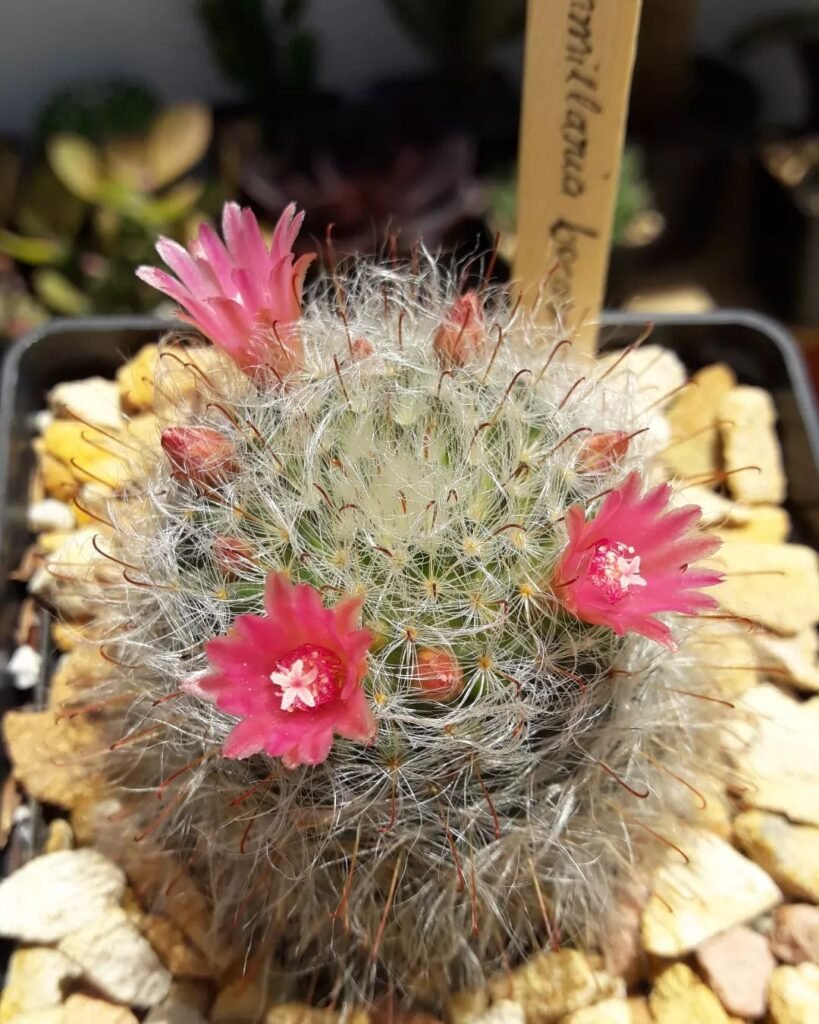
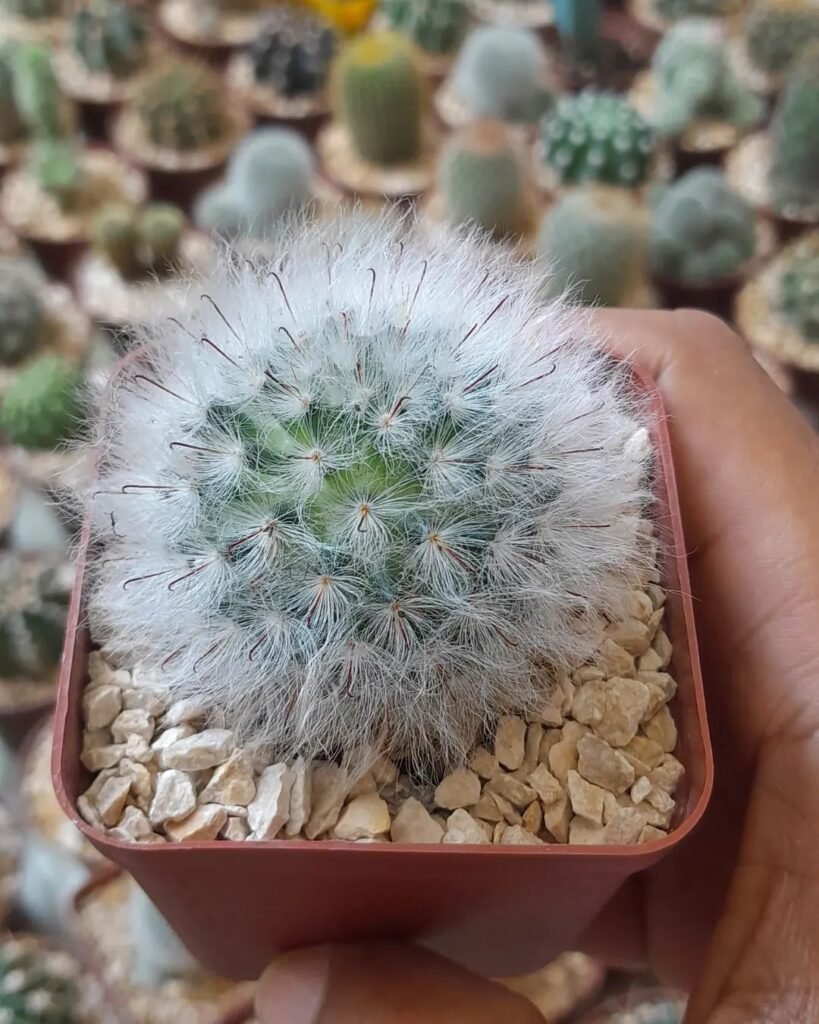
Mammillaria bocasana is a slow-growing cactus that does not require frequent repotting. Typically, you will only need to repot it every three to five years. When it comes time to repot your Mammillaria bocasana, follow these tips:
- Choose a pot that is slightly larger than the current one. This will allow the roots of the cactus to spread and grow.
- Make sure the pot has drainage holes. This is crucial for preventing excess moisture and potential root rot.
- Use a well-draining soil mix, such as cactus mix or sandy potting soil. These types of soil will help prevent waterlogging and promote healthy root development.
- Carefully lift the cactus out of its current pot, taking care not to damage the roots. If necessary, gently loosen the roots to encourage healthy growth.
- Place the cactus in the new pot, positioning it at the same depth as it was in the previous pot. Avoid burying the cactus too deep, as this can also lead to root rot.
- Fill in the gaps around the cactus with the well-draining soil mix. Gently press down the soil to ensure the cactus is secure and stable in its new pot.
- Allow the newly repotted Mammillaria bocasana to settle in its new pot for a few days before watering. This will give the roots time to adjust and minimize the risk of overwatering.
 Did you know the Mammillaria bocasana, or Powder Puff Cactus, has a unique defense? Its fluffy appearance hides hook-shaped spines to deter predators, a clever survival strategy in the wild. It’s not just attractive but also a marvel of nature’s adaptability, perfect for adding intrigue to any indoor garden.
Did you know the Mammillaria bocasana, or Powder Puff Cactus, has a unique defense? Its fluffy appearance hides hook-shaped spines to deter predators, a clever survival strategy in the wild. It’s not just attractive but also a marvel of nature’s adaptability, perfect for adding intrigue to any indoor garden.
FAQ about Mammillaria bocasana (Powder Puff Cactus)

Curious about the best care for your Mammillaria bocasana, also known as the Powder Puff Cactus? You’ve hit the jackpot! I’ve compiled all the essential advice to make nurturing this adorable cactus straightforward. From understanding its sunlight needs to getting the watering just right, you’re on track to see your Powder Puff Cactus thrive.
Your Mammillaria bocasana thrives in bright, indirect sunlight. A south-facing windowsill where it receives light but is protected from the harsh midday sun is ideal in the UK climate.
Water when the soil completely dries out, typically every 2-3 weeks during the growing season (spring to summer) and reduce to once a month in the winter. Overwatering can lead to root rot.
Yes, it prefers a well-draining cactus mix. You can buy cactus soil or make your own by mixing potting soil with sand and perlite.
Signs include yellowing or mushy stems, a foul smell from the soil, and rot at the base. Allow the soil to dry out more between waterings.
Yes, you can during warm, sunny days. However, gradually acclimatise it to avoid sunburn and bring it indoors when temperatures drop below 10°C (50°F).
Repot every 2-3 years or when it outgrows its pot, ideally in spring. Choose a pot only slightly larger than the current one to prevent excess soil moisture.
Feed with a diluted, balanced cactus fertiliser during the growing season (spring and summer) once a month. Avoid feeding in autumn and winter.
Propagate by seeds or offsets. Gently remove the offsets in spring or summer and let them dry for a day before planting in cactus mix.
This can be due to too much direct sunlight, low humidity, or under-watering. Adjust its location and watering schedule accordingly.
Indoors, yes. Keep it in a cool, well-lit room and limit watering. It can survive temperatures as low as 5°C (41°F) if kept dry.
Mealybugs and spider mites can be a problem. Treat with a soft soap solution or neem oil at the first sign of infestation.
Yes, with proper care, it can produce lovely pink or white flowers. Ensure it has enough light and the right temperature range.
No, it’s not toxic, but the spines can cause discomfort if touched, so it’s best to keep it out of reach of pets and children.
Yes, sow seeds in spring in a warm, bright spot. It requires patience, as cacti grow slowly.
I trust this FAQ has cleared up how to look after your Mammillaria bocasana, affectionately known as the Powder Puff Cactus. Should you have any more questions, feel free to ask them in the comments. I’m here to lend a hand. Keep in mind, every gardener starts from scratch, and there’s always a bit more to learn as you tend to your prickly pal.

